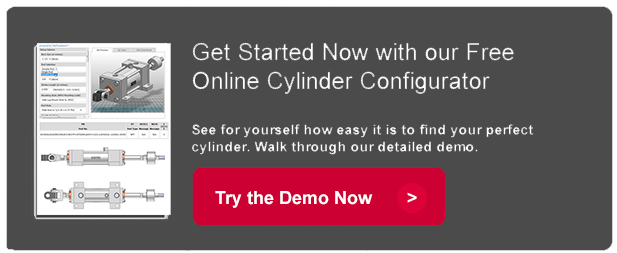Most cylinders are fixed at one point along their length. Although there is guidance and best practices associated with all of the mounting types --our thoughts go back to the times we have seen side lug cylinders used incorrectly – in one case; to the extent that the tube to cap joint was ruined.
Take a closer look
When you look at the plan view of any NFPA Side Lug cylinder you will find an area available on each lug which is large enough to accommodate a dowel pin. This is applicable to both the head and the cap. Thoughtful, as the guys who wrote the standard were in providing space for dowels at both ends; it is normally essential that only one end is ever ‘fixed’ solidly to the mounting.
Longitudinally fix a cylinder rigidly at both ends and all sorts of forces might be inflicted upon the body of the cylinder. Pick the most appropriate end and then dowel that on both sides to fix its position by all means – but on virtually all installations; the other end is best left to slide marginally, if it must, to allow for such things as unequal thermal expansion between cylinder and structure, or maybe mechanical flexure of the structural mounting faces.
Not a fan eh?
We've heard many people say that they are not fans of dowels. The holes may need line reaming to ensure equal stress is taken on both items and they can be difficult to extract should the cylinder need removing. Shoulder screws have a place to fill in some designs and that may be the route a few engineers prefer to take.
What really makes most installations work is calling for a thrust key as part of the cylinder specification. Head end, or cap end, Sheffer Engineers can configure it wherever you need the key. It has much greater shear strength than any pair of dowels can have for a particular bore size and installation and removal of the cylinder should be quick and painless!
The key to the key
What is also a really good idea is to think through which end to place the key. (Check out another post, The Ultimate Cylinder Design Checklist, as an awesome resource). It is much kinder on the cylinder to place it at the end which is best to take the largest thrust the cylinder is to deliver. That needs thinking through; and will probably differ with each machine design – but if in any doubt; the Sheffer Engineering Department would be more than happy to get together with you and help sort out a ‘best option’ design.
One other non-catalog variant a lot of people may not be aware of; is extending the depth of material and thereby making more or less the whole thickness of the head or cap into a key.
Any uses come to mind? Leave a comment with your thoughts below...
Image credit: phanlop88


